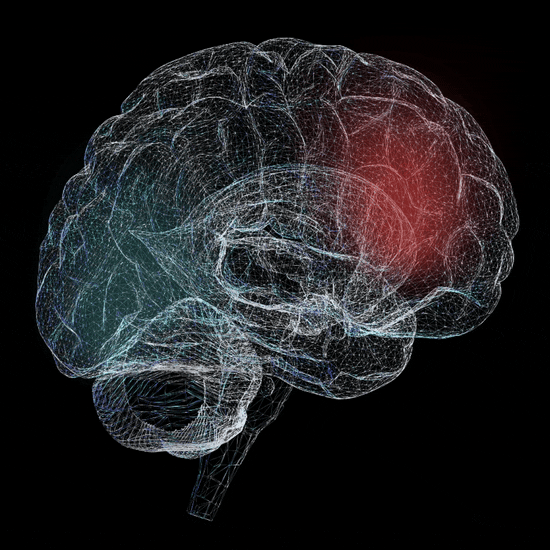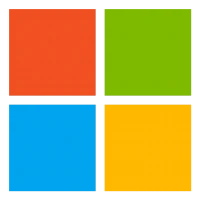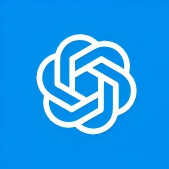gpt-oss
Alternatives
0 PH launches analyzed!
Problem
Users rely on closed-source, proprietary AI models with high computational costs and limited customization, restricting flexibility and scalability for specific applications.
Solution
Open-weight AI models (120B & 20B) under Apache 2.0, enabling state-of-the-art reasoning and tool use optimized for consumer hardware, allowing local deployment and customization.
Customers
AI researchers, developers, and data scientists seeking customizable, cost-effective models for specialized use cases without API dependency.
Unique Features
Apache 2.0-licensed open-weight models, balancing high performance (120B parameters) with efficiency for consumer GPUs/TPUs, unlike closed-source alternatives.
User Comments
Appreciation for open-source accessibility
Efficient local deployment reduces cloud costs
Superior reasoning capabilities for niche tasks
Easy integration with existing tools
Supports ethical AI transparency
Traction
Models launched under Apache 2.0 (120B and 20B versions), developed by OpenAI, a leader in generative AI with $2B+ estimated annual revenue and 100M+ active users across products.
Market Size
The global generative AI market is projected to reach $1.3 trillion by 2032, driven by demand for open-source LLMs in enterprise applications (Grand View Research).

OpenAI Open Models
gpt-oss-120b and gpt-oss-20b open-weight language models
373
Problem
Users rely on proprietary language models with restricted licenses, leading to limited customization, high costs, and dependency on vendor-specific ecosystems.
Solution
An open-weight AI model (gpt-oss-120b/gpt-oss-20b) enabling developers to customize, deploy, and scale models for agentic tasks and commercial use under Apache 2.0.
Customers
AI developers, researchers, and startups needing flexible, high-performance LLMs for tailored enterprise applications.
Alternatives
View all OpenAI Open Models alternatives →
Unique Features
Apache 2.0 license for unrestricted commercial use, open-weight architecture for fine-tuning, and optimized for agentic workflows.
User Comments
Enables cost-effective model customization
Apache license simplifies commercial adoption
Supports complex reasoning tasks
Requires technical expertise to deploy
Limited ecosystem compared to proprietary models
Traction
No explicit metrics provided; positioned as competitive open-source alternatives to GPT-4.
Market Size
The global generative AI market is projected to reach $126 billion by 2025 (Statista).

Hierarchical Reasoning Model
Brain-inspired, multi-level reasoning & planning AI model
128
Problem
Users need AI models capable of complex sequential reasoning tasks but rely on larger, less efficient models requiring multiple processing steps or more parameters, leading to higher computational costs and slower performance.
Solution
AI model tool with a 27M-parameter architecture performing complex reasoning in a single forward pass, utilizing dual recurrent modules for planning and detail execution. Example: solving puzzles and mazes efficiently without iterative steps.
Customers
AI researchers, engineers, and developers focused on optimizing reasoning tasks in areas like robotics, game design, or automated problem-solving.
Unique Features
Brain-inspired dual recurrent modules (high-level planning and detail-oriented execution) enabling superior performance on puzzles/mazes compared to larger models despite 27M parameters.
User Comments
Innovative approach to sequential reasoning
Outperforms larger models in specific tasks
Efficient single-pass processing
Effective for maze-solving applications
Versatile for AI-driven puzzles
Traction
Launched on ProductHunt with 220+ upvotes (as of October 2023), featured in AI/ML communities, no disclosed revenue or user numbers.
Market Size
The global AI market is projected to reach $1.59 trillion by 2030 (Grand View Research, 2023), with reasoning/planning systems being a key growth segment.

Gemma Open Models by Google
new state-of-the-art open models
42
Problem
Traditional models in machine learning and AI are often heavyweight, requiring significant computational resources which limits accessibility for smaller organizations or individual developers.
Solution
Gemma Open Models by Google is a family of lightweight, state-of-the-art open models, offering accessible, efficient solutions built from advanced research and technology akin to the Gemini models.
Customers
Small to mid-sized tech companies, independent coders, and researchers in the field of AI and machine learning.
Unique Features
State-of-the-art performance while being lightweight, free access to cutting-edge technology, openness for customization and improvement by the community.
User Comments
Highly accessible for smaller projects
Significantly reduces computational costs
Facilitates innovation in AI applications
Community-driven improvements
Admiration for Google's commitment to open-source
Traction
The specific traction details such as number of users, revenue, or financing were not provided.
Market Size
$126.5 billion (estimated global AI market size by 2025)

Phi-4 Reasoning
Big Reasoning Power, Small Models
270
Problem
Users rely on large language models (LLMs) for reasoning tasks in math, science, and code, but these models require high computational costs and resource-intensive infrastructure.
Solution
Phi-4-Reasoning offers small open-weight models (3.8B/14B) optimized for reasoning tasks, enabling users to deploy cost-efficient AI solutions on platforms like Azure AI Foundry and Hugging Face.
Customers
AI developers, researchers, and enterprises working on resource-constrained projects requiring efficient reasoning capabilities.
Alternatives
View all Phi-4 Reasoning alternatives →
Unique Features
Delivers GPT-4-level reasoning with 3.8B/14B parameter models, optimized for math/science/code tasks, and accessible via Azure/Hugging Face.
User Comments
Reduces deployment costs for AI reasoning
Surprisingly powerful for small model size
Easy integration with existing platforms
Competitive performance in STEM tasks
Open-weight flexibility for customization
Traction
Available on Azure AI Foundry and Hugging Face; exact user/MRR data unspecified, but comparable models like Mistral 7B have 50k+ GitHub stars.
Market Size
The global NLP market, which includes reasoning-focused AI models, is projected to reach $49.2 billion by 2028 (MarketsandMarkets, 2023).
Problem
Users need to create powerful reasoning data to enhance AI models' performance on complex tasks by teaching them critical thinking, step by step.Lack of tools to efficiently create reasoning data for AI models.
Solution
A platform called Frontier that assists AI labs and startups in generating powerful reasoning data through process supervision, enabling AI models to think critically and improve performance on complex tasks.Provides tools for creating reasoning data and process supervision to enhance AI model performance.
Customers
AI labs and startups like Anthropic, xAI, and Cohere focusing on enhancing AI models' reasoning abilities for improved performance on complex tasks.
Unique Features
Frontier offers process supervision tools to teach AI models critical thinking, boosting their performance on complex tasks.

GLM-4.5 Open-Source Agentic AI Model
GLM-4.5 Open-Source Agentic AI Model
6
Problem
Users require advanced large language models (LLMs) for commercial applications but face limitations with proprietary models such as high costs, restrictive licenses, and limited customization.
Solution
An open-source AI model (GLM-4.5) with 355B parameters, MoE architecture, and agentic capabilities. Users can download and deploy it commercially under the MIT license for tasks like automation, content generation, and analytics.
Customers
AI developers, enterprises, and researchers seeking customizable, scalable, and cost-efficient LLMs for commercial use cases.
Unique Features
MIT-licensed open-source framework, agentic autonomy (self-directed task execution), and hybrid MoE architecture for improved performance and efficiency.
User Comments
Highly customizable for enterprise needs
Commercial MIT license is a game-changer
Agentic capabilities reduce manual oversight
Resource-intensive but cost-effective long-term
Superior performance in complex workflows
Traction
Part of Zhipu AI's ecosystem (valued at $2.5B in 2023). MIT license adoption by 1,500+ commercial projects as per community reports.
Market Size
The global generative AI market is projected to reach $1.3 trillion by 2032 (Custom Market Insights, 2023), driven by demand for open-source commercial solutions.

Open AI o3 API
Advanced reasoning models with safety-first innovation.
173
Problem
Users face challenges in evaluating AI safety and mitigating risks using conventional models.
Solution
API tool that provides openAI o3 and o3-mini models for safety researchers.
Advanced reasoning capabilities aimed at redefining AI safety evaluations and risk mitigation.
Customers
Safety researchers in the field of AI development.
Alternatives
View all Open AI o3 API alternatives →
Unique Features
Cutting-edge innovation in AI safety evaluations and risk mitigation.
User Comments
Highly advanced models for AI safety evaluations.
Innovation in risk mitigation using AI technologies.
Potential to revolutionize safety research in AI development.
Exciting tool for safety researchers to use and explore.
Much-needed advancement in the field of AI safety.
Traction
The traction of this product is not specifically mentioned in the provided information.
Market Size
Global market for AI safety evaluations and risk mitigation is estimated to reach $6.45 billion by 2025.

Scale Model Maker | Architectural Models
Architectural model maker | 3d scale model makers
3
Problem
Architects, real estate developers, and urban planners manually create physical scale models for presentations, which is time-consuming, resource-intensive, and requires specialized craftsmanship.
Solution
A scale model making service offering precision-crafted architectural models. Users can outsource 3D scale model creation (e.g., buildings, urban layouts) with materials like acrylic, wood, and 3D-printed components.
Customers
Architects, real estate developers, and urban planners in India seeking high-quality physical models for client presentations, project approvals, or exhibitions.
Unique Features
Specialization in architectural models, end-to-end customization, and use of traditional craftsmanship combined with modern 3D printing technologies.
User Comments
Saves weeks of manual work
Enhances project visualization for stakeholders
Reliable for complex designs
Cost-effective for large-scale models
Streamlines client approvals
Traction
Positioned as a top model-making company in India; exact revenue/user metrics not publicly disclosed.
Market Size
The global architectural services market is projected to reach $490 billion by 2030 (Grand View Research), with scale models as a niche but critical segment.

Open-ollama-webui
Open-Ollama-WebUI makes running and exploring local AI model
1
Problem
Users previously managed local AI models via CLI or less intuitive tools, facing complex setup and lack of user-friendly interfaces, which hindered experimentation and real-time interaction.
Solution
A web-based interface enabling users to run and explore local AI models via a chat-like UI, model controls, and dynamic API support. Example: Chat with models like Llama 2 without CLI expertise.
Customers
Developers, AI researchers, and tech enthusiasts who work with local AI models but prioritize simplicity and accessibility in testing and deployment.
Alternatives
View all Open-ollama-webui alternatives →
Unique Features
Seamless chat interface mimicking platforms like ChatGPT, model version switching, API integration for custom workflows, and offline/local model support.
User Comments
Simplifies local AI experimentation
Intuitive alternative to CLI tools
Lacks advanced customization for experts
Great for quick model testing
Requires better documentation
Traction
Newly launched (as per Product Hunt listing), open-source with GitHub repository activity, positioning to attract early adopters in the AI dev tool space.
Market Size
The global AI developer tools market is projected to reach $42 billion by 2028 (Statista, 2023), driven by demand for accessible AI model management.

